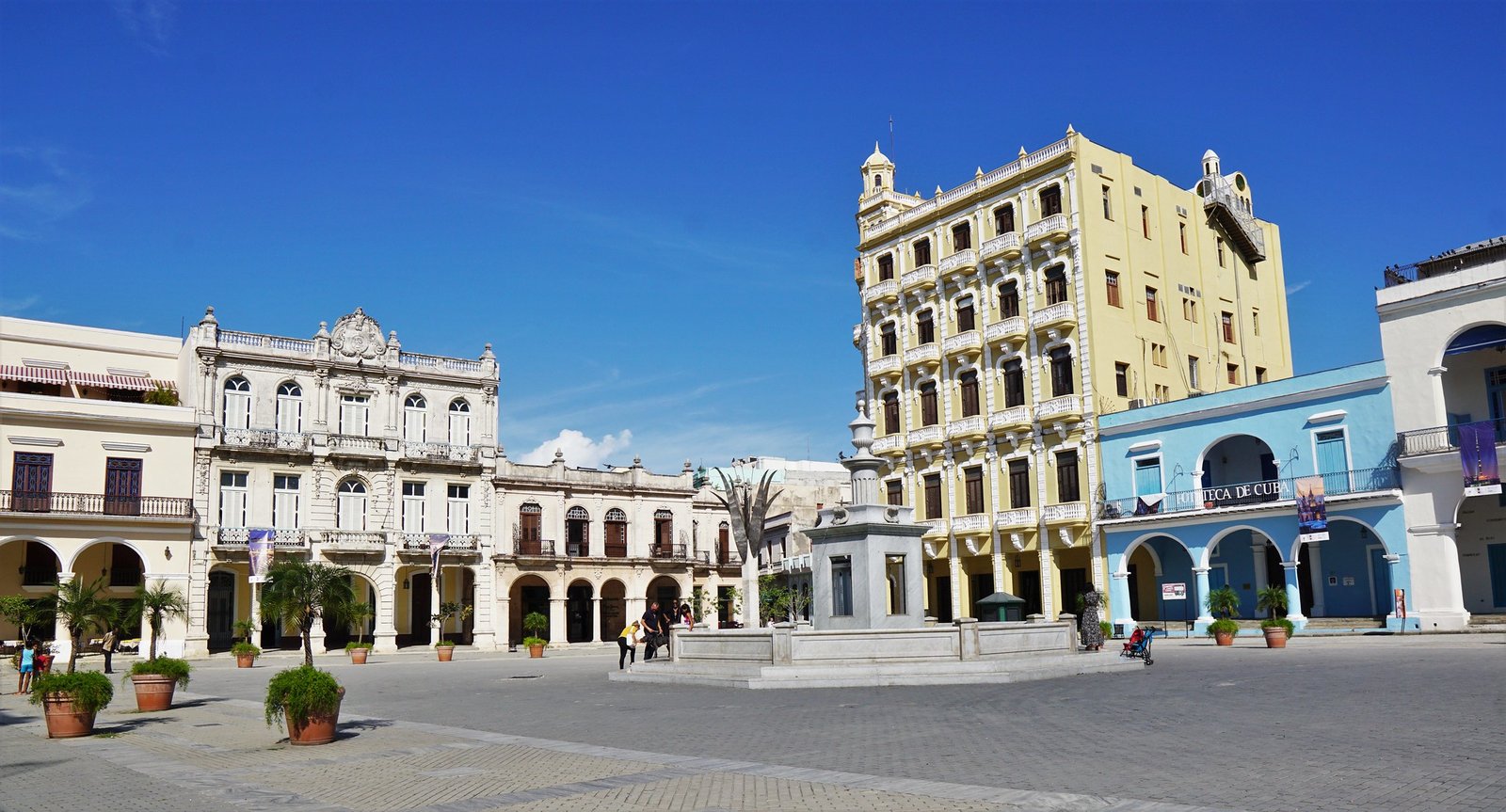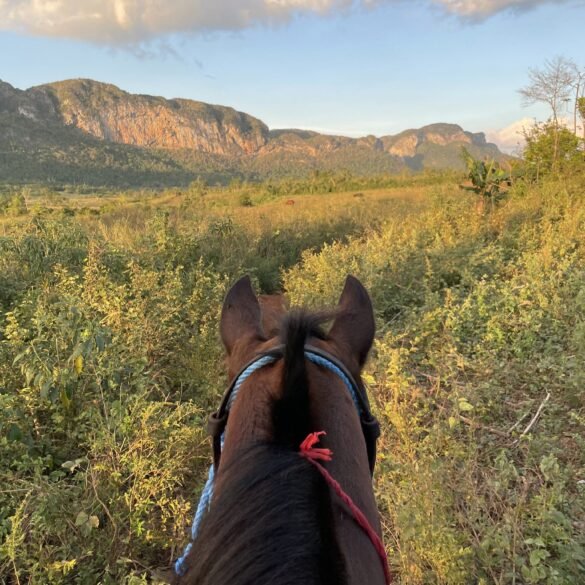There are two pictures I can show to people who want to know the impression Havana left on me, both taken on our very first day, the first few pictures in the city.
The first is the view from the balcony of our Airbnb.

The second is the inside view of our Airbnb.

The street view is very common in Havana - the decrepit, crumbling facades of once beautiful buildings, decaying roads full of puddles and potholes, iron gates on doors and windows, and clothes hanging out to dry.
And then, the indoor picture shows the love and care Cubans put into their homes with homemade decorations sprucing up old and outdated furniture, clean and maintained spaces oriented towards social gatherings and quiet family evenings, and not a trace of dust, dirt, and decay that is so widespread just outside their windows.
This composition of wider decay and tiny preserved spaces is the essence of Havana. A crumbling five-story building with gaping holes in walls and missing upper-story floors would possess a small enclave on the first floor housing a butcher's shop with hustling employees, large cuts of meat swinging on hooks, and a queue of customers out to the street. A narrow alley surrounded by dilapidated structures would unexpectedly open up into a beautifully restored square, proof that at least some of the UNESCO money is going towards rehabilitation of ruins and preservation of old architecture. A busy road full of Soviet-era rusted cars would suddenly have gorgeous 1950s American Cadillacs weaving in and out of traffic. Havana is a composition of beauty and decay, reflecting Cuba’s complex history of conquest and slavery, liberation and revolution, economic struggles and sanctions.


After many years of prohibition, the socialist government has turned to tourism for revenue and has brought foreign investors to remodel and build hotels. In Old Havana, a number of streets and squares have been rehabilitated in an effort to attract tourists. But Havana is a very large city, and the restoration efforts affected less than 10% of its entire area. And the result is a city of magnificent shambles, streets lined with antique mansions in various degrees of restoration – some looking almost brand new, others covered in half-hearted repair attempts and splashes of paint, others are nothing more than a skeletal façade with a jumble of beams and rubble behind empty door frames.
In one of the prior posts, I described how hard life is for locals in Cuba. And yet, it’s hard not to fall in love as a visitor. The air of Havana is permeated by music, energetic and soulful, with conga drums, claves, maracas, scrapers, and bells, that bring palpable rhythm to the city. The architecture captures the eye and imagination - Moorish, Venetian Gothic, Art Nouveau, and Art Deco. The culture and traditions are reflected not just in national monuments, but in dance, in music, in religious ceremonies, and in the faces of residents.
Havana is a movie set. You can film a futuristic zombie apocalypse story among photogenic ruins, broken asphalt, and peeling plaster. Or take a step back in time and produce a movie about the 1950s among restored buildings and cars of that era. And finally, use the National Capitol building in downtown Havana as a stand-in for the almost identical United States Capitol building in Washington D.C.

Havana is a stage. Abruptly, a parade of colorfully dressed singers, drummers, and dancers appear, all precociously balancing on stilts while rhythmically dancing down an alley, gathering an audience as they move. Down another street, a jumble of vibrant sculptures made out of bathtubs opens into an artist's space with workshops, stores, and traditional African dancing performances. A casually opened door will reveal a strangely decorated room with hand-drawn blue waves on the walls and a black doll dressed in a dazzling white dress. It's a Santeria house of worship where Catholic traditions are blended with the Yoruba religion of West Africa and believers bring offerings of fruit, liquor, flowers… and sacrifice animals. On the Malecon seawall, stone-built embarkment separating the ocean from the promenade, a man blows a large winding animal horn at sunset. The sound echoes down the city, carried by the ocean breeze, as everyone on the sidewalk watches him in anticipation. He begins his one-man play, a loud recital of blessings to Cuba and its people, dramatic and lyrical, ending with three more wistful cries of the horn.

Havana is a song. And not just the popular Camila Cabello song, but jazz, African beats, 50s style cabaret, son, trova, and salsa. The screeching sounds of the guiro instrument and ubiquitous tunes of the Buena Vista Social Club pour out of every tiny bar, some serving nothing but mojitos or Cuba Libres. After two days I could sing along with the ever-popular “Guantanamera” song without understanding a single Spanish word. After nightfall, couples danced on the street to the faint beat of an African drum blended with the strumming of a Spanish guitar. This mixture of cultures has created a fusion of rhythms and styles uniquely Cuban and undeniably delightful.

On the second day in Havana, we watched an Afro-Cuban folkloric dance, while sitting on an upside-down bathtub in an artist’s backyard. One girl in a bright-colored dress, manifesting the goddess of love and sex workers, swirled and sensually danced to the beats of the drums. Another girl, in a ripped burlap outfit with a straw hat, stumped her feet and gyrated to the melody while teasing children and adults, a reincarnation of the trickster god. There were locals and tourists in the audience, all clapping and cheering along. After the performance was done, the owner of the studio came forward to talk to the audience for a bit. He described his vision of art, religion, and dance in Cuba, his hope for the future, and the entanglement of the Cuban present to its past roots. And in the end, he said the phrase that echoed through our entire trip, from the magnificent contradictions of Havana to the atmospheric streets of Trinidad, from the serene valleys of Viñales to the gorgeous beaches of the Bay of Pigs:
“Enjoy Cuba, but don’t try to understand it!”


